Berlin - From Somber History to the Joys of Urban Living
![]()
Heading to Den Haag Centraal Station early in the morning, we felt a bit sad to be leaving the Netherlands. In the two months we had lived in Delft and Den Haag, we had come to love this flat, low, watery land of expansive green fields with grazing cows, compact towns of brown brick houses with red tiled roofs, cheeses of inestimable flavorfulness, beer of dependable drinkability, and cheerful friendly people.
Yet, as the train sped east across the border and into Germany, we began to look forward to the next urban exploration - Berlin!
Schoneberg - Our New Home
After two lovely nights with our friends, Birgit and Claudia, we moved into the most wonderful apartment we have ever had! As we sat in our sunny living room on our comfy couch, sipping wine, we wondered at the serendipity that had brought us here. The apartment was in one of a cluster of buildings facing onto a lane off Lutzowstrasse in Schoneberg district.
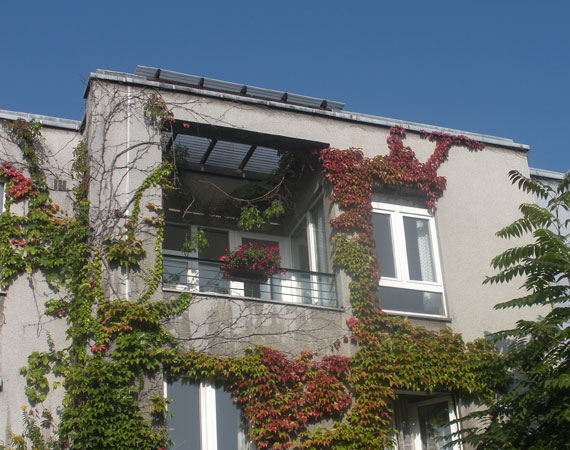
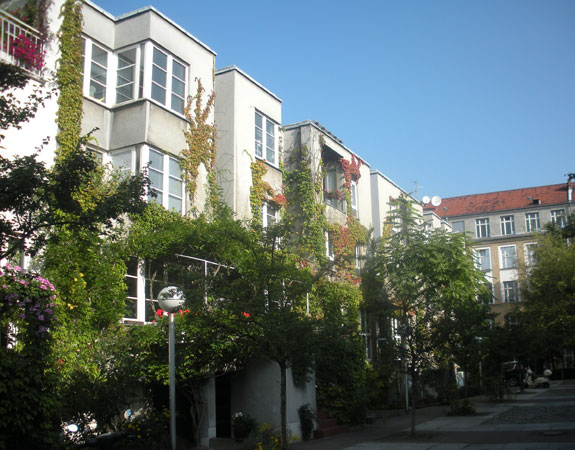
We had an open living - dining room and kitchen, a separate bedroom and a bathroom that included a washing machine. It was clear that someone had lived here and all the features that made it home were still in place.
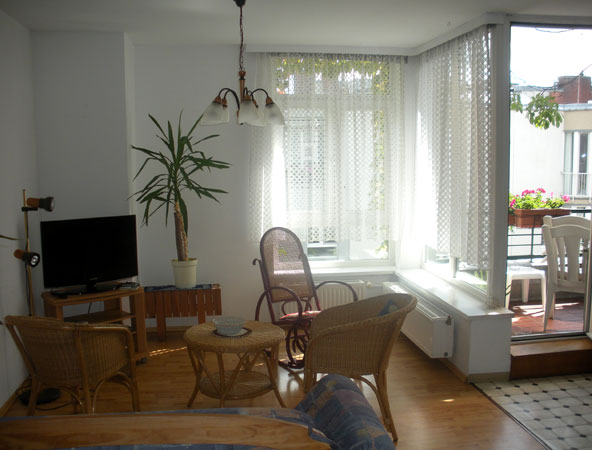
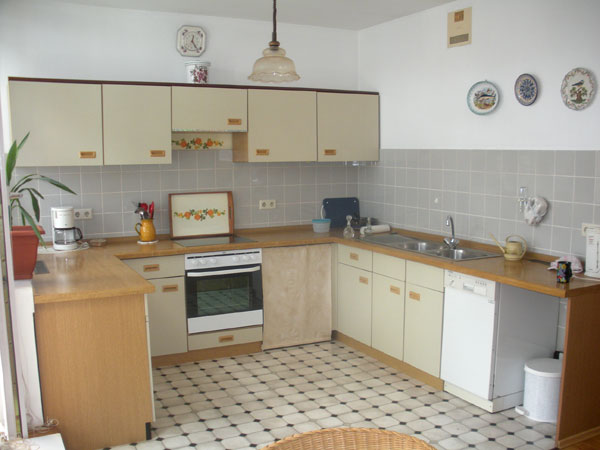
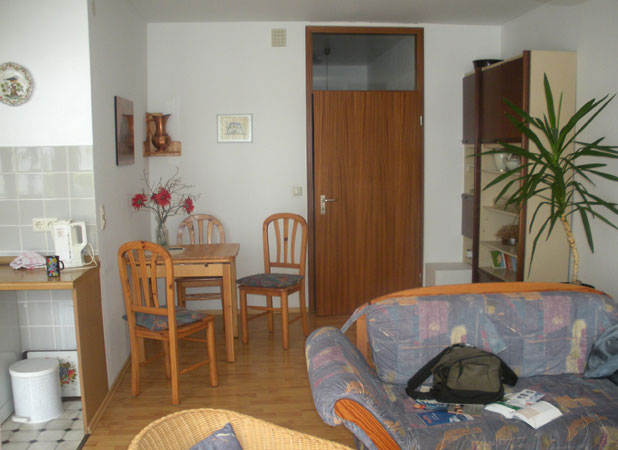
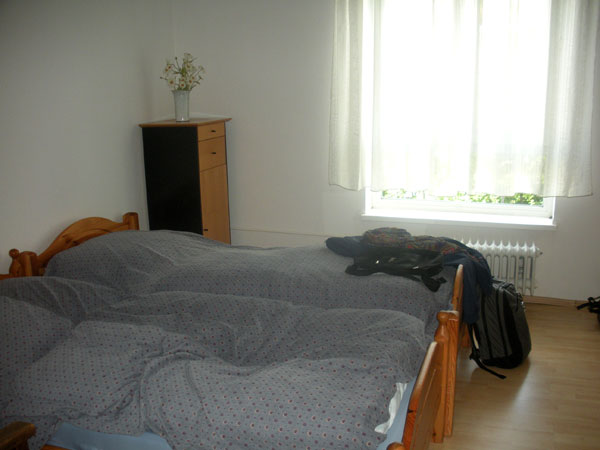
This setting offered us the opportunity to discover life in a quiet urban neighborhood with a tiny cafe that sold pastries, sandwiches and coffee right at the corner, a cozy Italian cafe just across the strasse.
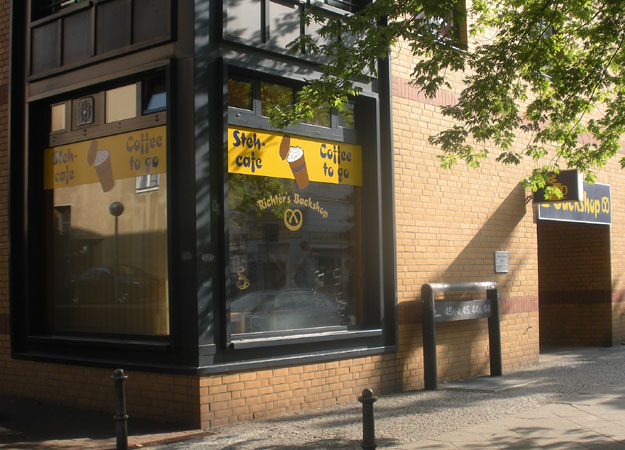
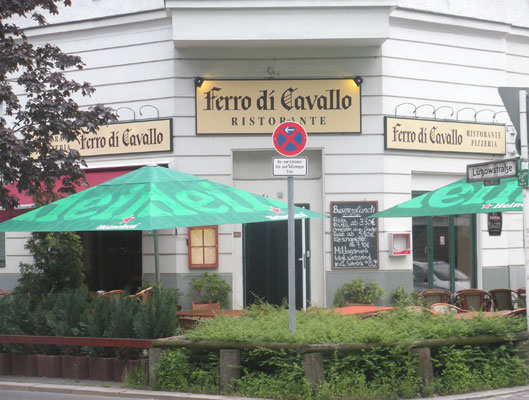
Bus halts were an easy 200 or 300 meter walk away, and a retail center with cafes and shops selling everything one might need was a pleasant 10 minute stroll away.
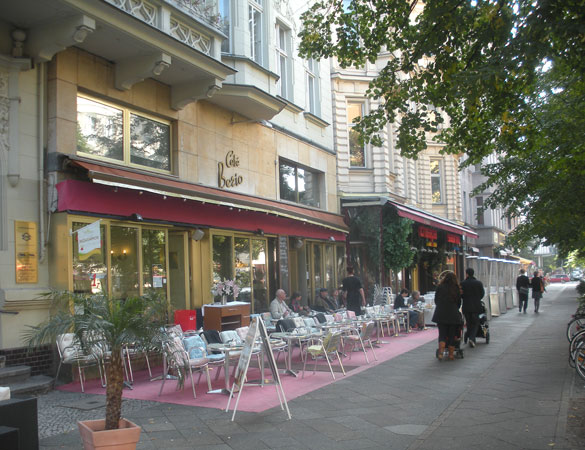
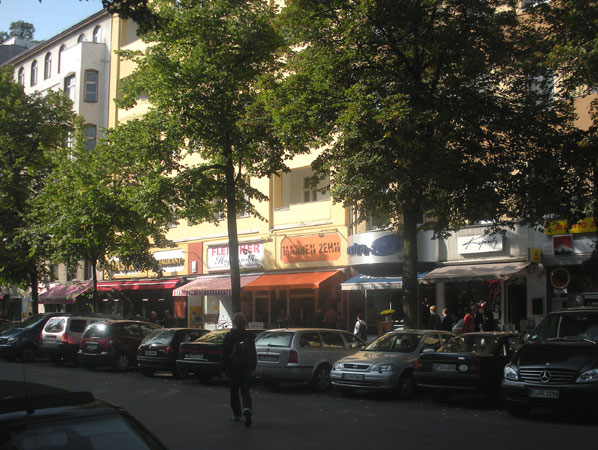
There was also a major U-bahn station there to provide additional mobility options. In no time at all, we were settled and ready to begin exploring Berlin.
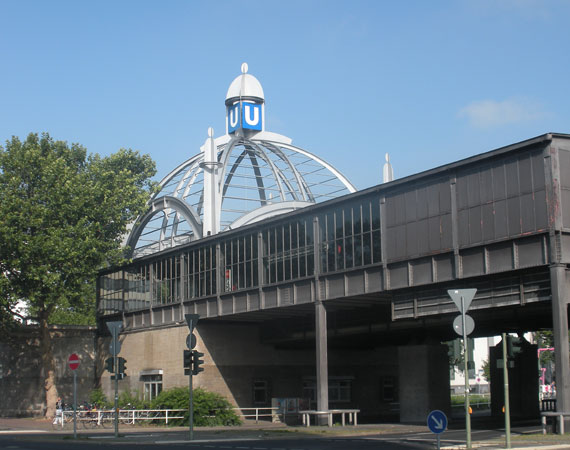
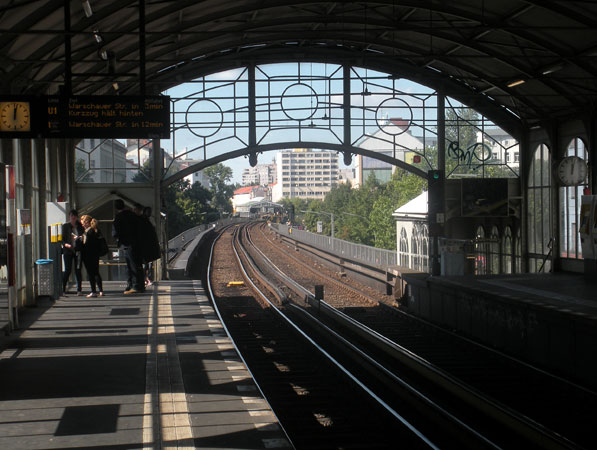
Dem Deutschen Volke
Beginning with a visit to the Reichstag building with its grandiose Weimar architecture topped by its phenomenal, much visited dome, we began our journey back into the history of Berlin and Germany. A photo display recalled the tumultuous history of this building that symbolizes, more than any other, the essence of Dem Deutschen Volke, the German people.
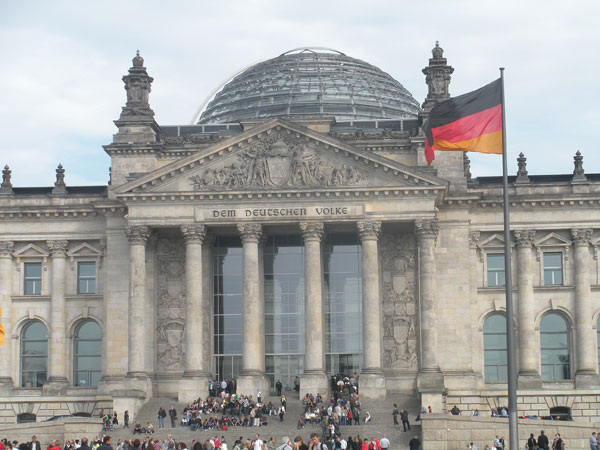
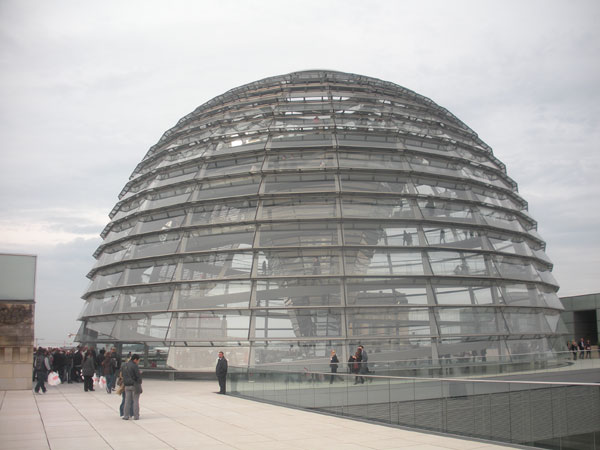
The views from the dome offered a perspective on the modern city, a rich mix of grand and elegant 18th and 19th century structures, utilitarian buildings from the era of the German Democratic Republic (East Germany), thoroughly innovative Bauhaus inspired edifices, and soaring contemporary glass walled towers.
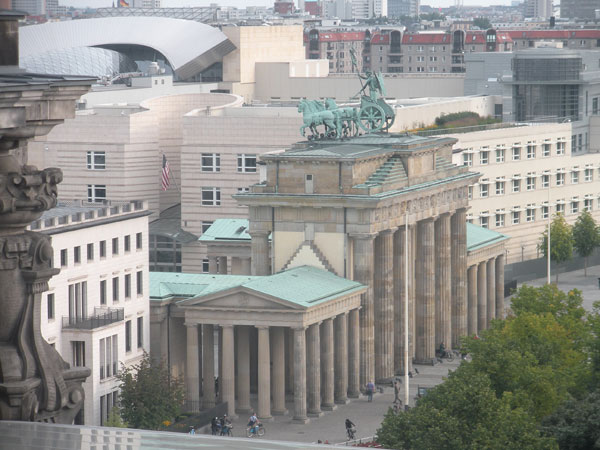
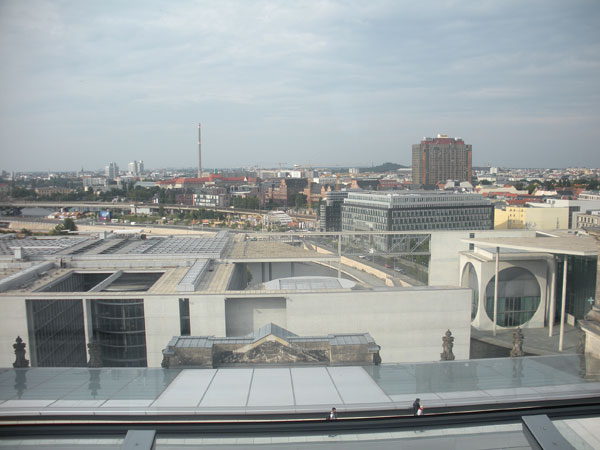
On the ground, outside the Reichstag, we discovered the rows of stones marking the path of the Berlin Wall that had separated the city into East and West from 1961 until that thrilling night of November 9, 1989 when thousands of Berliners converged on Brandenberg Gate. With the growing crowds, the Volkspolizei simply gave up checking documents and allowed East Berliners to walk into West Berlin at will. A street party broke out (historic picture below right)! The next day, the wall began to come down!
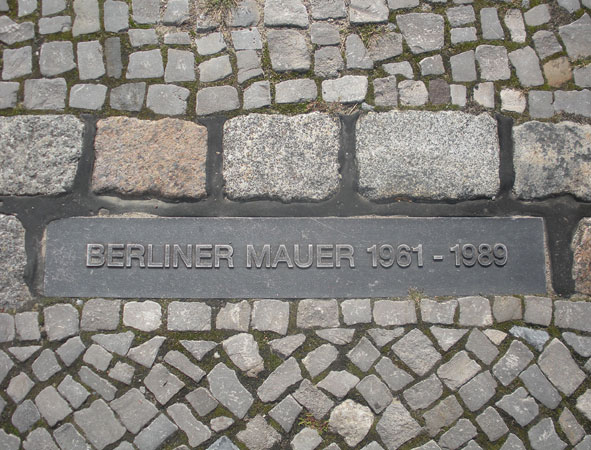
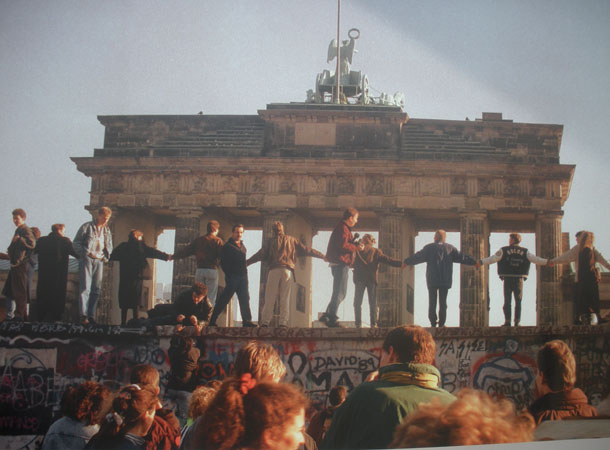
The removal of the wall was just the beginning of the East German Peaceful Revolution. The SED government of the German Democratic Republic (GDR) was unwilling to abandon its absolute claim to power and it took demonstrations and negotiations to convince them that the times had changed. On March 18, 1990, the first free ballot in the GDR was held and people voted in favor of the "Alliance for Germany" the party that promised rapid reunification.
Then the work began to negotiate the reunification agreement between East and West Germany and, amazingly to us, an additional agreement between East and West Germany and the WWII Allies: Britain, USA, France and Russia! On October 3, 1990, the details of Germany's reunification were finalized.
Now, after twenty years of hard work, Germany's story is a true success story! Berlin has bloomed into an exceptionally livable city, once again the capital of Germany, glowing with a rich mix of newly built architectural extravaganzas and fully restored historical monumental buildings. The basic philosophy that continues to guide the process is one of conservation and preservation. Structures are preserved and restored whenever possible. Yet, Berlin's revival is still a work in progress.
The Old and the New
Beginning in the 1950s, and especially since reunification, Berliners have undertaken an amazing rebuilding of this city that was ravaged by war. Berlin's architectural heritage was, and continues to be, a rich one, indeed. We soon came to realize that many of the dignified and noble old neoclassical and baroque buildings and bridges were actually reconstructed. Often salvaged or recovered elements were used in the reconstruction.
We present a few examples...
- The Reichstag building with its completely new interior, and glorious glass and steel dome,
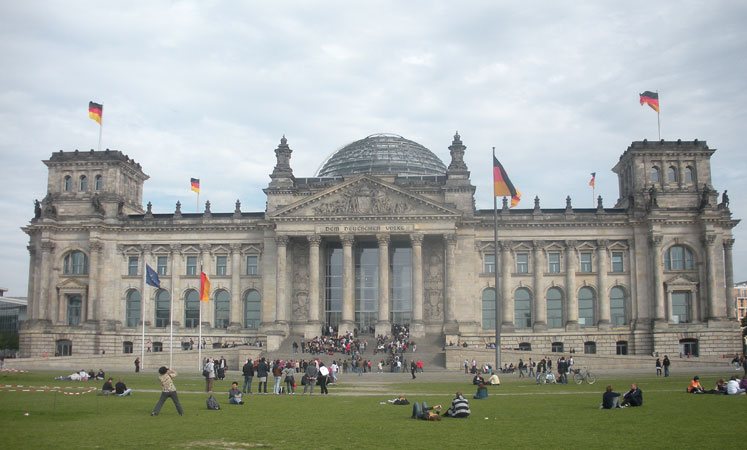
- The Olympic Stadium, where the world watched the 1936 Olympics and the 2006 Football World Cup and we watched Berlin's Hertha beat Karlsruhe.
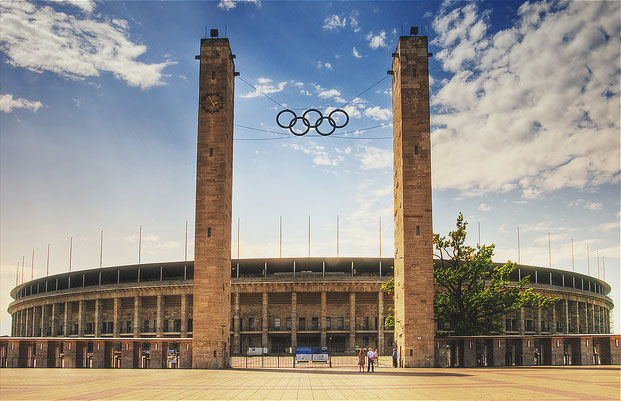
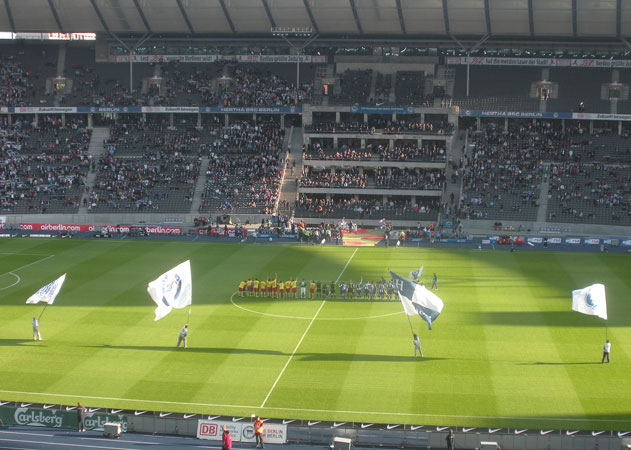
- Oberbaumbrucke (Oberbaum Bridge), and the pedestrain bridge leading to the new Hauptbahnhof (main train station).
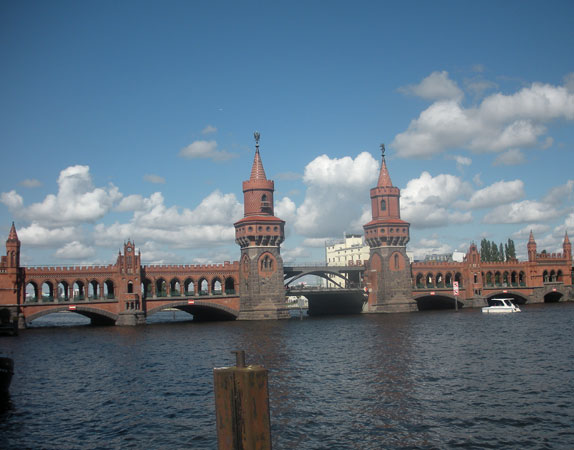
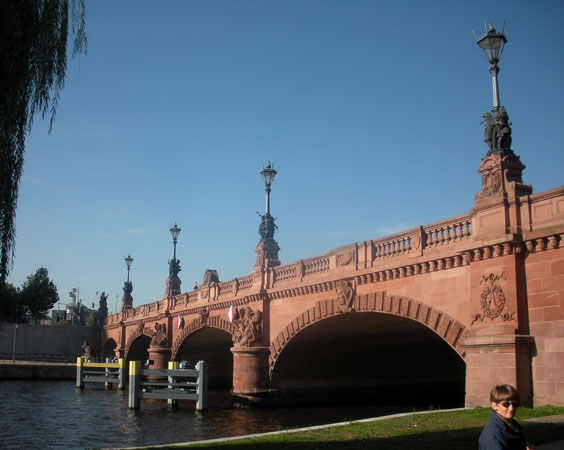
- The Gendarmenmarkt, with two similar churches inspired by Rome's Piazza del Popolo, was obliterated during the war, and rebuilt after reunification. The adjacent concert hall had a 'red carpet' event going on the day we visited.
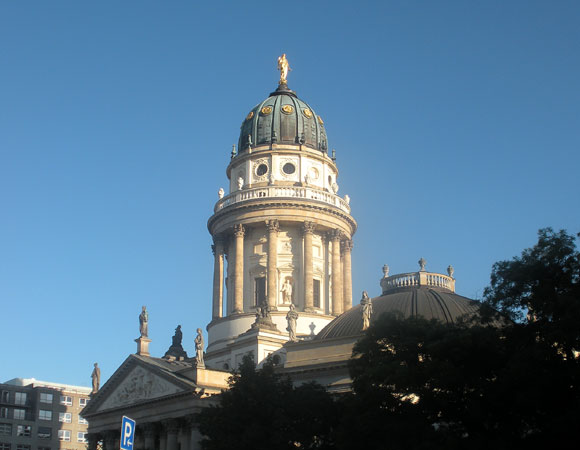
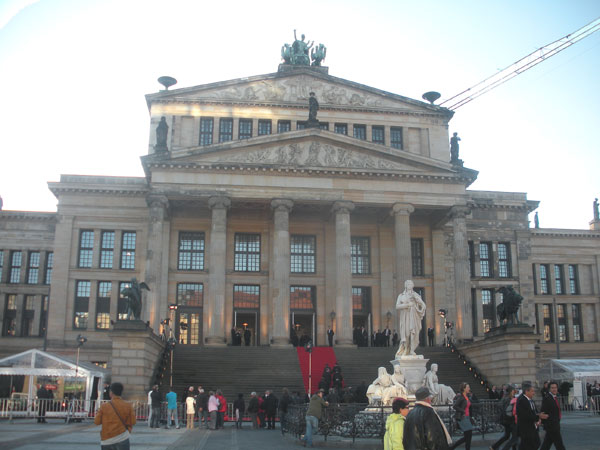
Reconstruction was sometimes impossible, opening the opportunity for great contemporary architcture to flourish:
- Hauptbahnhof (main train station)
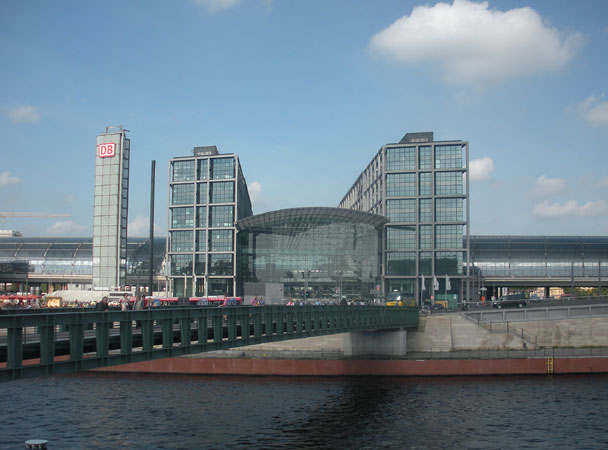
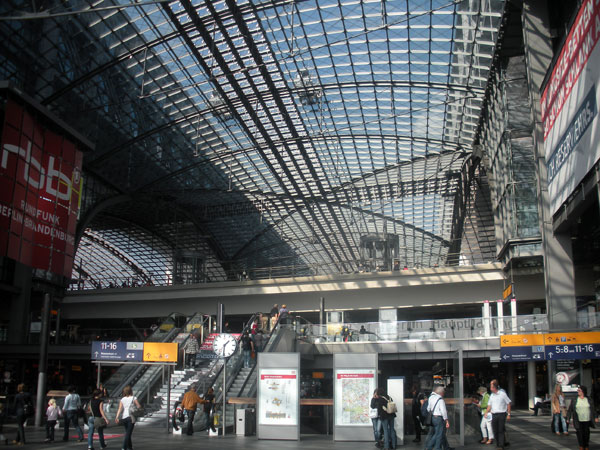
- Government Quarter adjacent to the Reichstag
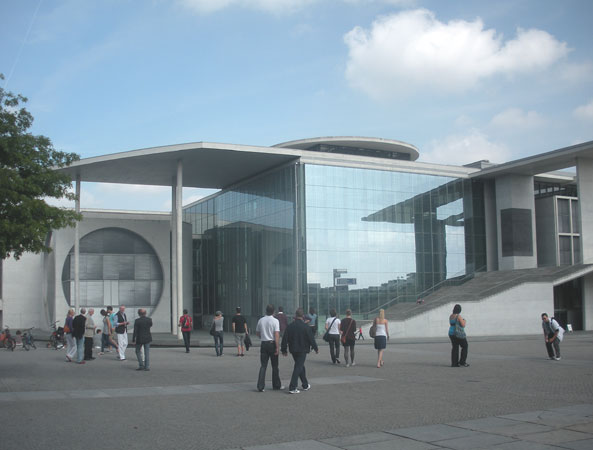
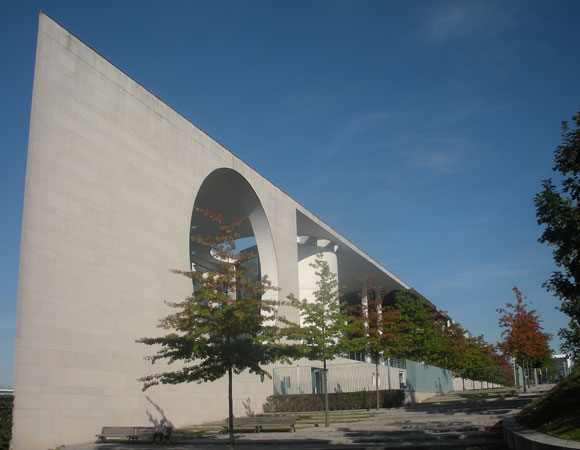
- Pottsdammer Platz, destroyed during WWII, is now graced with modern skyscrapers including the soaring canopy of the Sony Center. We visited the observation deck to enjoy the views over the Sony Center and the surrounding city.
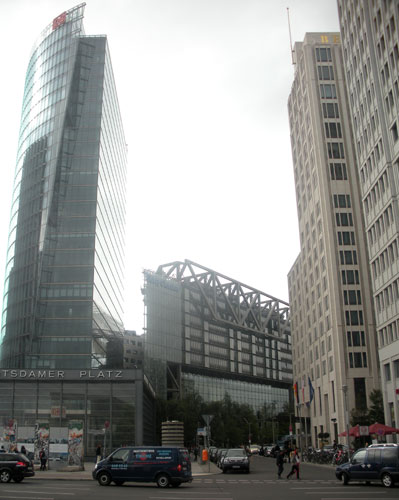
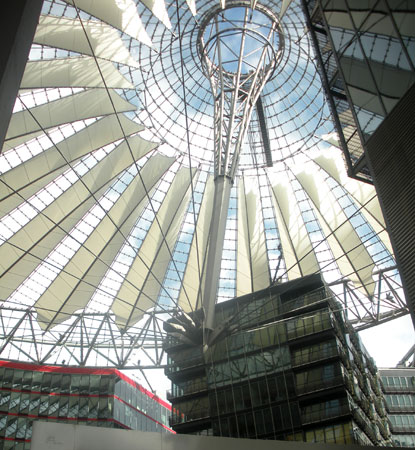
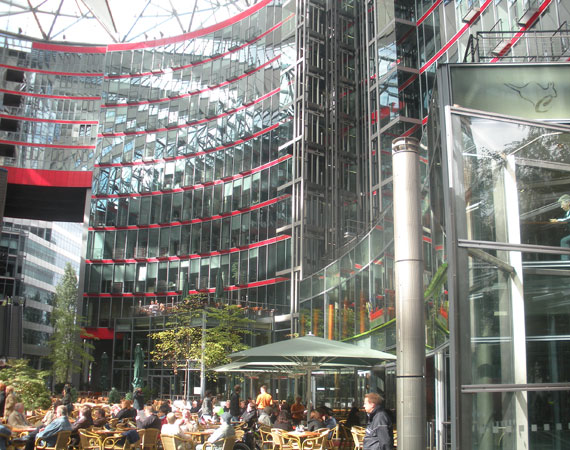
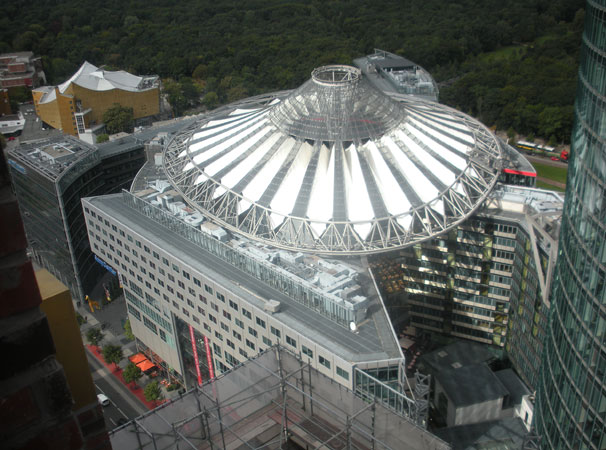
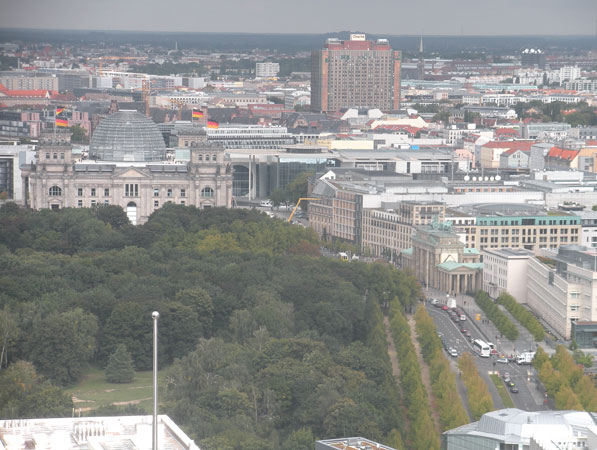
Historic Gloom and Glory
On our visits to the Deutsches Historisches Museum and our walks through Mitte, Berlin's heart, we came to realize that Berlin's history has encompassed the history of the German People for centuries.
- Beginning at the audacious Brandenberg Gate, the symbol of German solidarity since its construction in 1791, Berlin offered an abundance of memorials and monuments, keeping history alive.
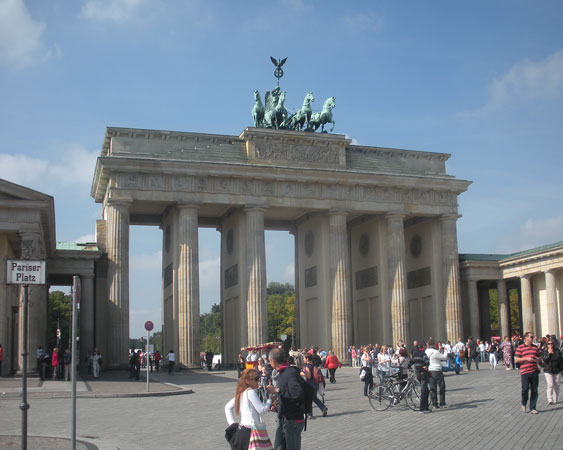
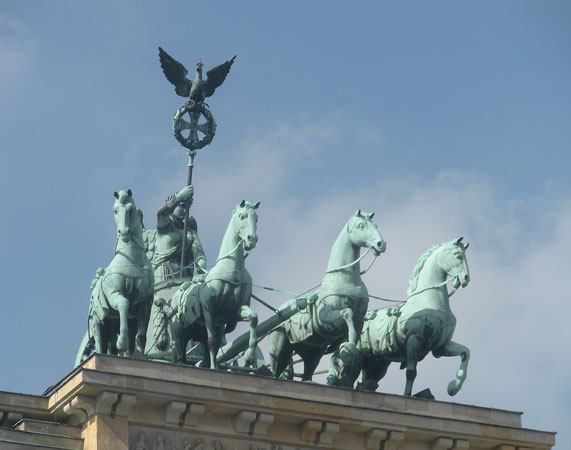
- The classic Neue Wache, now the National Memorial to the Victims of War and Tyranny, was created by the great architect, Karl Friedrich Schinkel. Inside is the poignant statue of a mother grieving for her lost son.
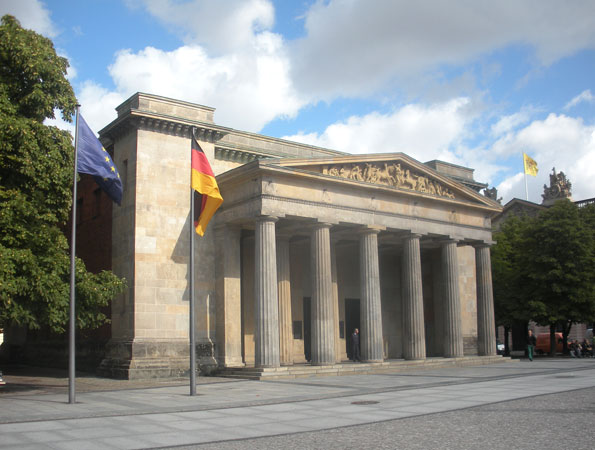
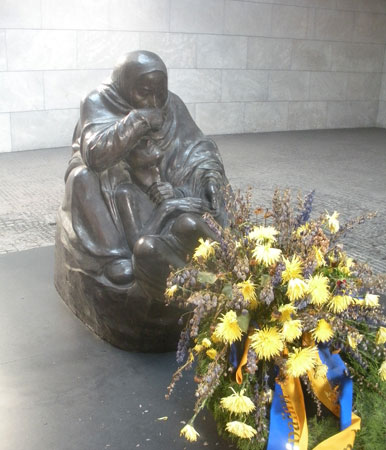
- Kaiser Wilhelm Memorial Church, a grand church built at the end of the 19th century and bombed in 1943, offered a strangely poignant reminder of the horrors of war. We offer our photo of the church today with historic photos before and after the bombing.
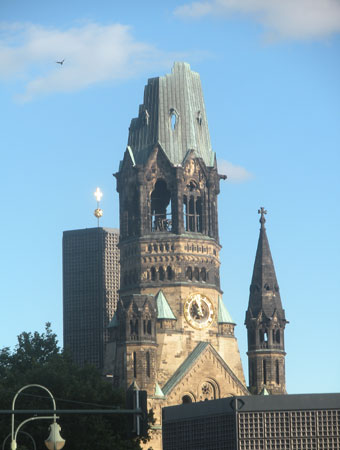
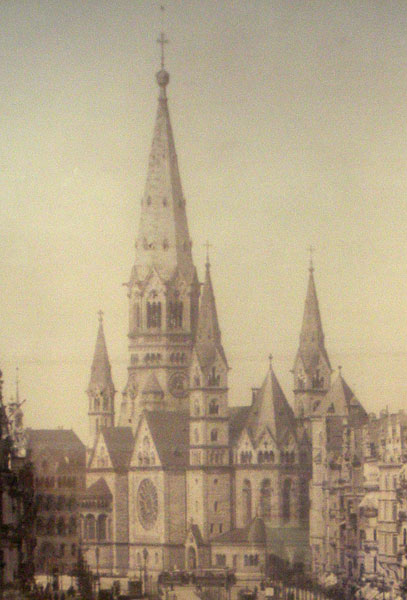
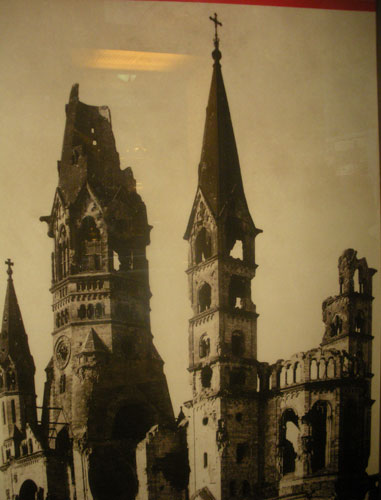
- National Cathedral and the Rotes Rathaus (Berlin City Hall)
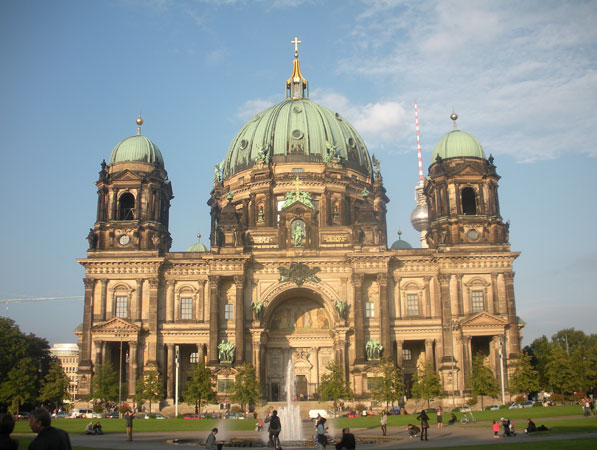
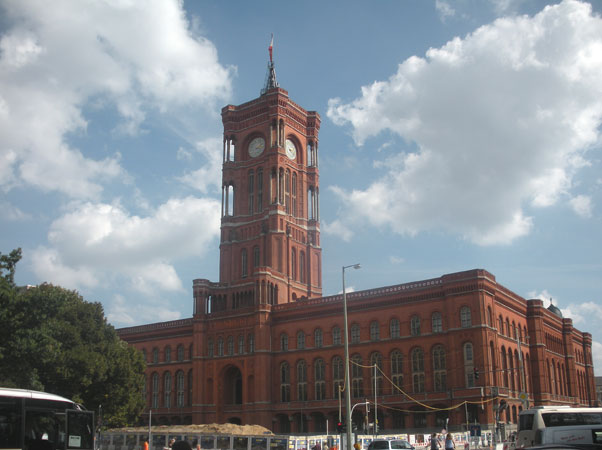
- The National Memorial to the Murdered Jews of Europe, created by Peter Eisenman, inspired by a Jewish graveyard, offered visitors a place to contemplate the monstrous horrors of the Holocaust.
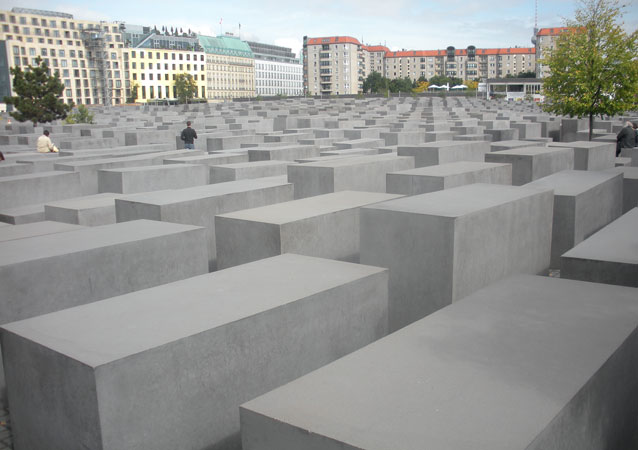
- Mauer Memorial: The Mauer (the Wall) was not only a wall but two walls on either side of a broad open space, a "death strip", watched over by soldiers in watchtowers, strung with trip wires that detected passage and turned on bright lights. This broad barrier completely enclosed the environs of West Berlin, not only through the city's center but all around the edges as well. Three roads permitted travel from outside the Iron Curtain into West Berlin.
The Mauer was built in 1961, to prevent East Germans from leaving, as 2,500,000 had done during the 1950s. Families and friends were separated, neighborhoods were split apart, homes too close to the wall were bulldozed to prevent people from escaping. Some tried, many were killed during the 28 years of enforced separation. The Wall Documentation Centre preserves and recreates the grim reality of Berlin's partition.
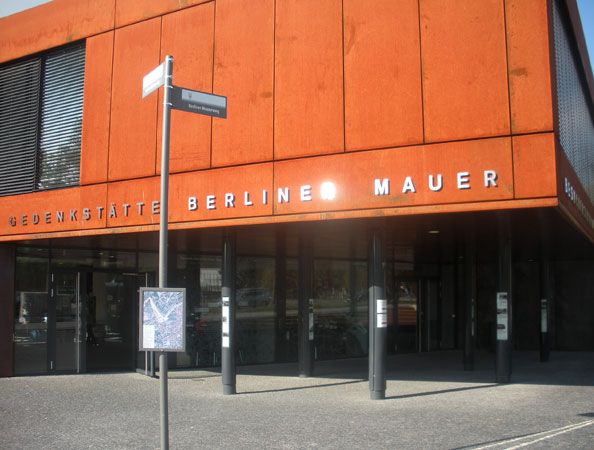
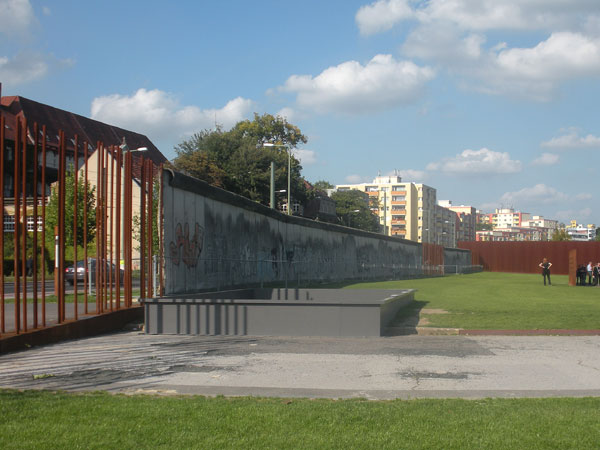
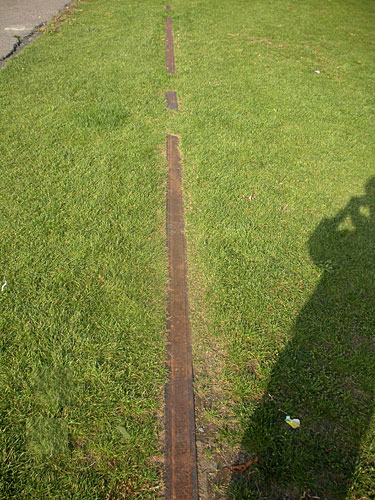
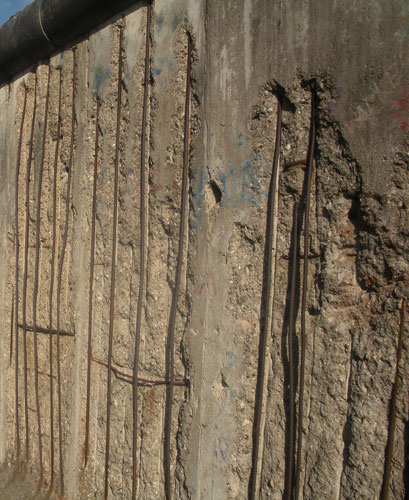
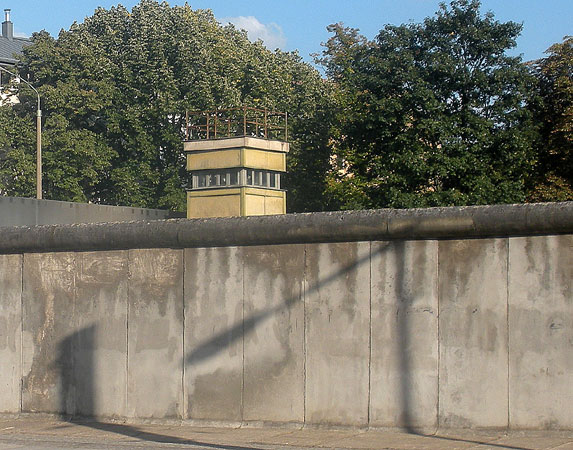
- Checkpoint Charlie, the military post and gateway between the two Berlins, was the most well known passage through the Iron Curtain. Here a standoff between American and Soviet forces in 1961 brought tanks rumbling along Friedrichstrasse. A replica, complete with guards and a sign announcing "YOU ARE NOW LEAVING THE AMERICAN SECTOR", marked the spot.
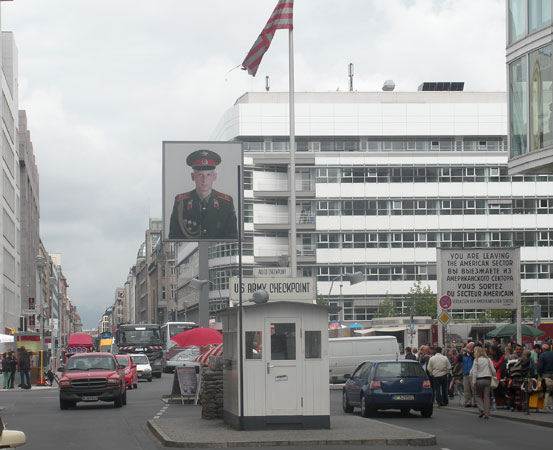
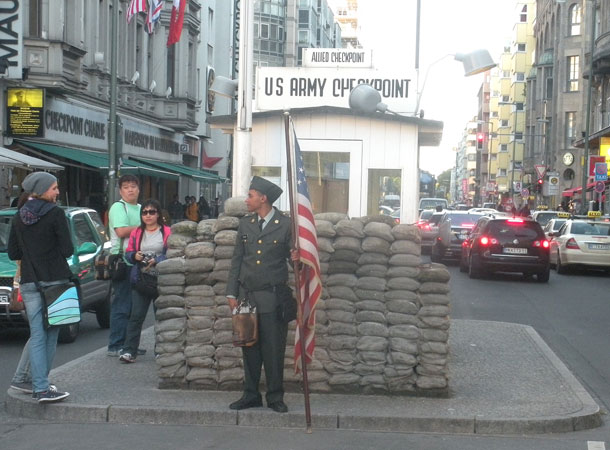
- The terminal of Templehof Airport now standing silently, but offering the imaginative visitor an opportunity to hear the faint rumble of the engines of the planes that flew food and other needed goods to Berliners during the blockade and airlift in 1948.
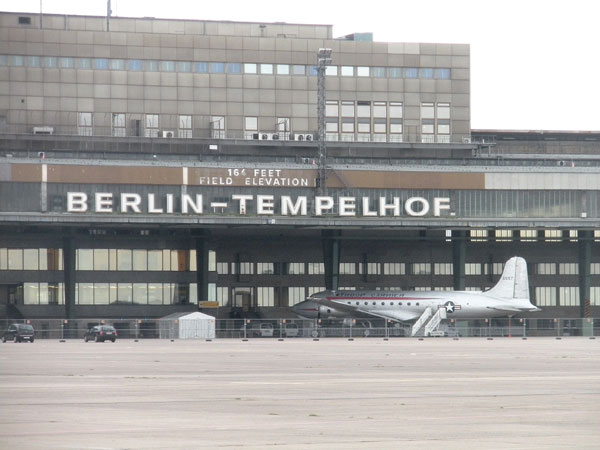
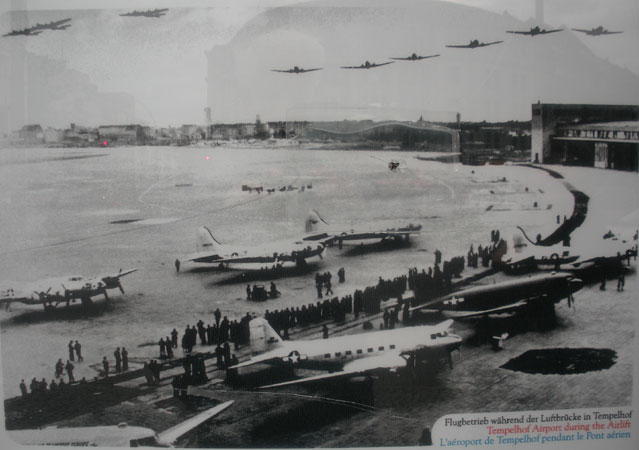
Our life in Berlin was filled with the joys of urban life - easy mobility with many choices, shopping for daily needs within a pleasant walking distance, outdoor markets twice a week, plenty of cafes and pubs, the vast Tiergarten Park for lovely walks in greenery. Then there were the many museums, monuments, and neighborhoods to visit and explore.
Add to this, the opportunity to understand more fully the challenges that the Berliners faced during the whole of the 20th century!
What more could we ask?
Click here to return to our 'Summer 2010 - Turkey and More Time in Europe' page
![]()